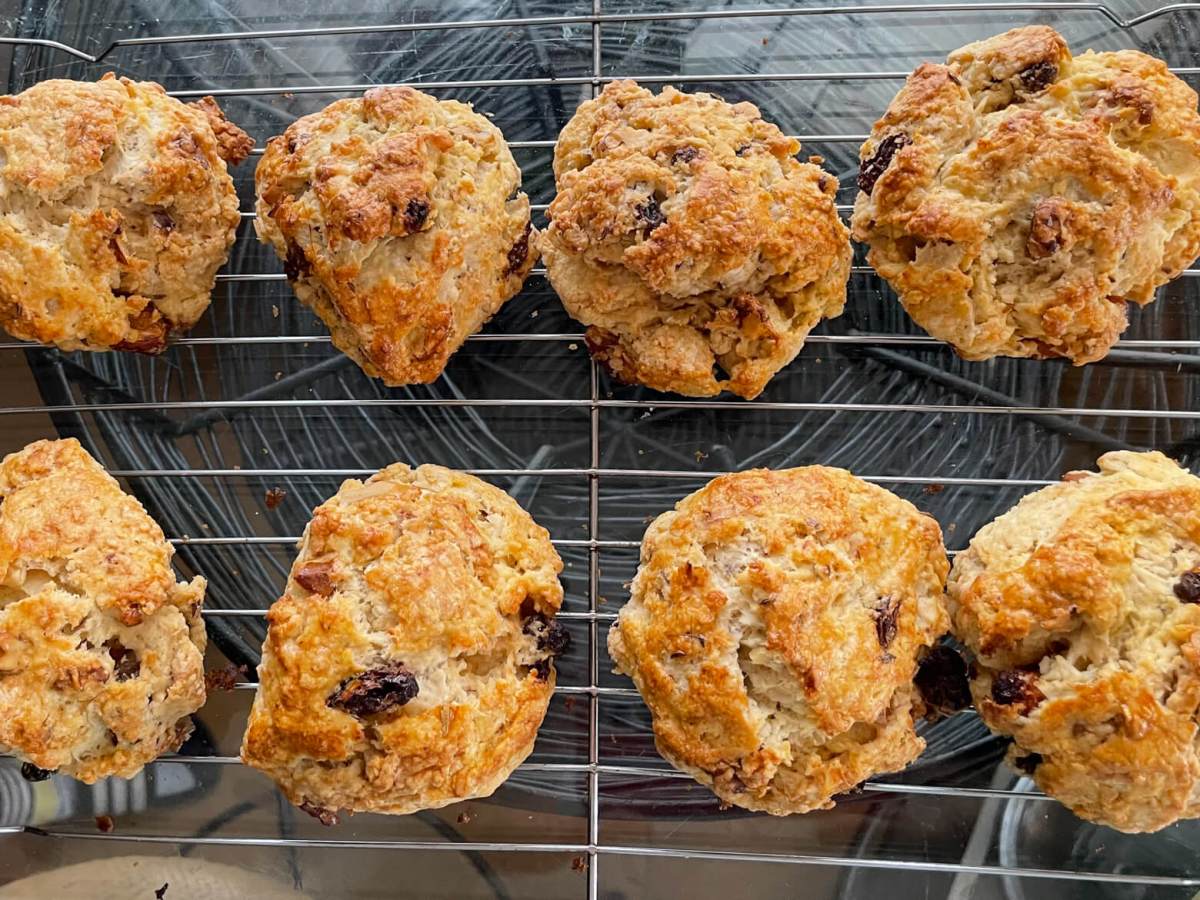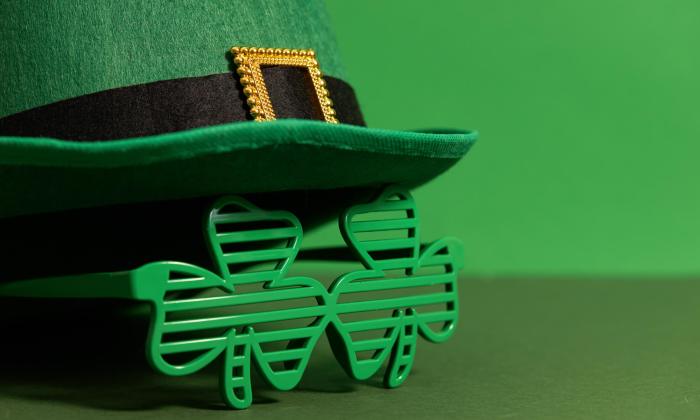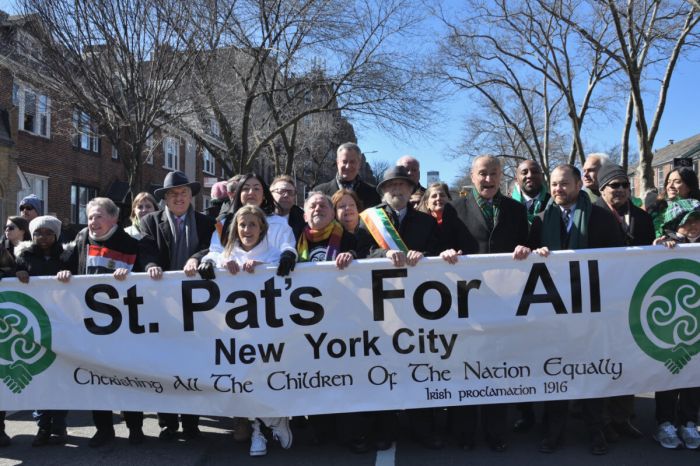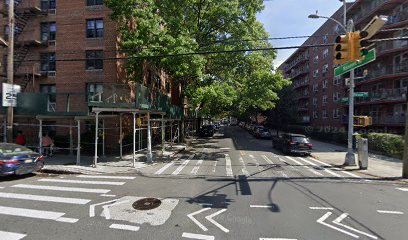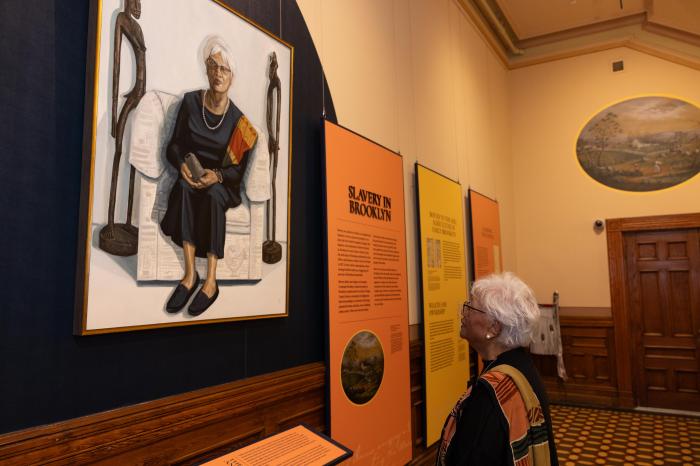Scones, those small un- or lightly sweetened biscuit-like cakes made from flour, fat, and milk, sometimes with added fruit have British origins—Scottish, English or Irish.
Some articles say that the Irish scone differs from by usually having more sugar in the batter, sometimes sprinkled on top, and with the Irish butter and raisins.
St. Patrick’s Day a’coming has inspired more than one New Yorker to cook up a batch in recognition of the holiday.
Richard Marshal and Alix Elias of Greenwich Village boasted of baking up more than a dozen scones, adding candied ginger and pear to their mixture.
“I had to go to three stores before I found the candied ginger, “ says Elias who was motivated and got the confidence to try her hand at scones after watching the endless repetitions baking a particular recipe on Recipe TV.
“She uses one hand to mix the ingredients using your fingers to sieve the dough mixture,” Elias says on a tip the presenter gave on how to aerate and not over mix the batter. The Irish baker also said to use unripe pears.
Brenda Colling’s Simply Scones, shows the splatters and wear of a frequently accessed cookbook. After a winter when she made up batches of interesting flavored scones like chocolate chip/orange and cheddar and rosemary, she knew she HAD to make a more traditional Irish scone with the holiday coming up. Knowing the trick to good scones is really cold (or frozen) butter and not to over mix, the recipe she followed comes from the above book.
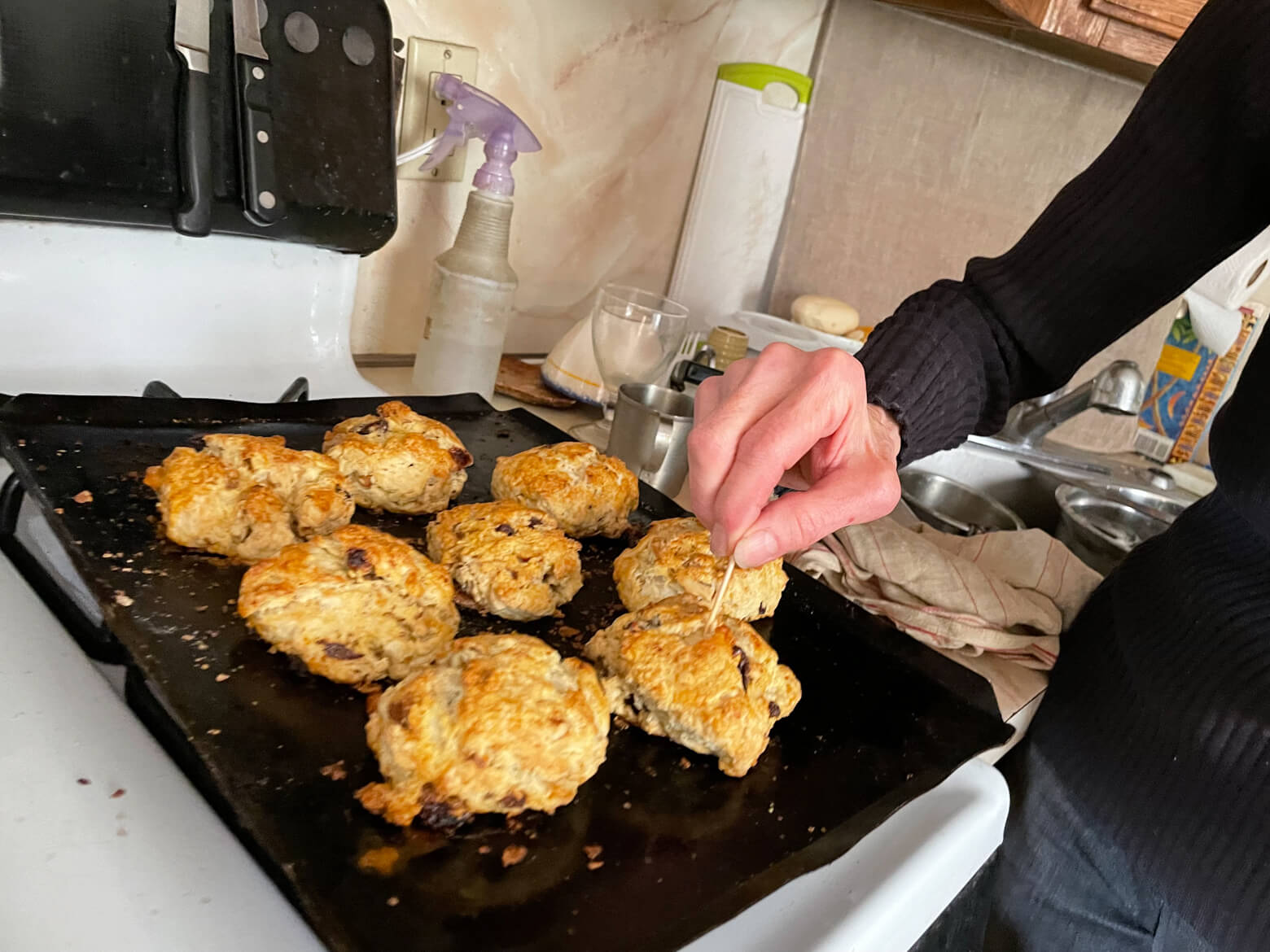
It calls for (dry ingredients) 2 cups of flour, 3 tablespoons of light brown sugar, 1 ½ teaspoon of baking powder, ½ teaspoon of baking soda, ½ teaspoon of salt, ½ teaspoon of caraway seeds, and 1/3 cup unsalted chilled butter cut into ½ cubes, and (the wet ingredients) ½ cup buttermilk, 1 large egg, (later adding) ½ cup coarsely chopped walnuts, ¼ cup of raisin, ¼ cut golden raisins.
After mixing the dry ingredients (using a pastry blender or two knives together scissor style) then adding the wet ingredients previously mixed together, and finally by hand mixing in the walnuts and raisins, the dough is ready (and not very wet).
Patting with lightly floured hands the mixture into a 9” diameter circle on a prepared baking sheet, with a serrated knife she cut the mixture into 8 wedges. These wedges can be place on a baking sheet as is, but Colling used these proportions and formed them into rounded biscuit shapes. She brushed the tops with egg yolk/water glaze, baking them 20-25 minutes in a preheated 375 degree oven until toothpick inserted in center comes out clean.
Needless to say, these scones were very tasty; the caraway seeds and raisins really nailing the flavors —setting this recipe apart from the others she’s enjoyed.
Scones sell locally from three to six dollars a piece, depending on where you get them—the farmer’s market, bakeries, cafés or bar/restaurants. Once the ingredients are assembled, a baker can discover how easy baking scones are, at a fraction of these prices.



